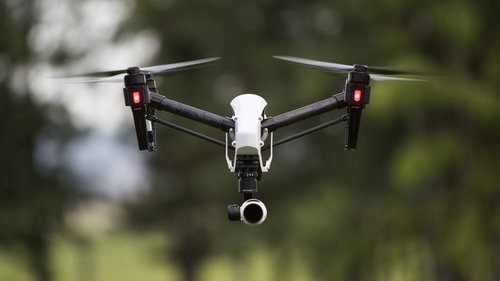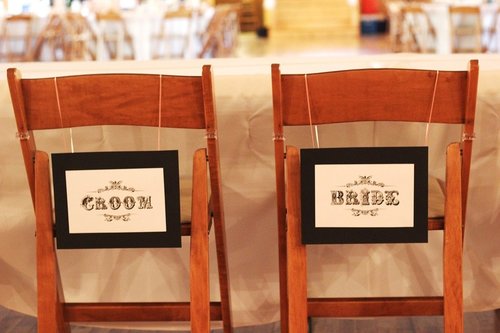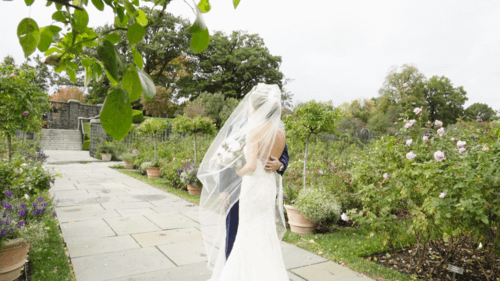Best Drones for Filming Cinematic Videos
With improved technology and affordable prices, even the best drones for filming are reasonable to get for the average videographer or indie filmmaker. Imagine being able to make movie magic like Stanley Kubrick:
Drones are cool, aren’t they?
They look like glorified tech toys but when you work with them, they work like a pro. Imaging and cinematography has come a long way with drones. The mechanisms, video quality and resolutions of the cameras used in drones have drastically improved with time.
Earlier, filmmakers were forced to use helicopters, zip lines or even cranes to shoot the aerial shots. Aerial scenes used to create the buzz about the movie. Either it was scenes of magnificent landscapes or chasing cars, adding aerial scenes to the movie was not easy. Obviously the filmmakers had to pay a very hefty price for that.
Gone are those days with the presence of drones. A drone can simply film from the sky. It is far beyond what most people can only imagine. Use them for recreation purpose or to build an aerial business service, choosing one from a wide variety of available drones needs proper research.
Drones are pricey prepositions. You need to believe that you get what you pay for. So when you need a platform to shoot a stunning aerial footage, be ready to spend the cash. A good research before spending a hefty amount would not hurt. The research should include specifications, handling/responsiveness, and battery life and flight software so that you can choose one to suit your best.
Before buying these ready to fly models, it is important to look for the following features.
Drone Price
The price of a drone tells you a lot. There are low cost drones (in the range of 100$) and then there are drones that price around 500$. The solid 500$ models are stable in flight and have excellent integrated camera. The ready-to-fly devices can be used right at the moment you buy them. Bring your own android or iOS device to fill the real time feed. A few models are accompanied with Android tablet remote controls.
Camera
Drones are specially built for filming purposes that is why the camera is one of the most important features you should be looking for. Go for the drones that include 4K camera because they offer highest level of quality in videos. The higher resolution of 4K cameras input perfection in your work.
Material
The material a drone is made up of defines its durability, resistance to damage and a few more features. All the latest drones are made up of carbon fibers because the material is lightweight, durable and resistant. Being lightweight, they can easily withstand the most amazing crashes and can be used in every condition.
Flying Capability
Get a drone that is compatible of working in any weather condition. Flying capability of a drone is quite important as high level of maneuverability lets the drone fly when the weather is problematic or bad. It simply means that nothing can stop you using it.
Controller
A few drones offer you with amazing controlling options that can simply enhance your workability. Choose a simply controlled device over a complicated one.
Drones Safety and Regulation
Mostly all the drones are loaded with safety features. They include GPS and return to home functionality. Even if their battery discharges, they can run on single for 20 minutes to land safely or to reach at the point of their take off.
Attaching a FAA number with your drone is really important because fly away of drones is not an uncommon thing. Do not take your drone above 400 m in any case because they can interrupt flights this way. Compare operating a quadcopter similar to driving where speed limit is very important. If you miss it, you would have to pay the ticket.
Racing and Toy Drones
You need to understand the difference between quadcopters and remote-controlled aircrafts that have been sold as drones. Drones include GPS tracking, return to home functionality and automated flight modes which are new for RC aircrafts. These particular features make a drone a drone.
For more info on how to best use drone cinematography and photography for your projects, check out these blog articles:
There are many, many companies and models available in the market but we have chosen the best 5 among them that are most popular and curate.

Known as the smallest camera-equipped quadcopter in dji’s drone line-up, mavic pro is a game changer for aerial photographers and filmmakers. The amazingly lightweight drone is portable in all senses. It is easier to carry it along to filming sites. It can be easily folded into a size of milk carton and it weighs merely 743 g while folded. The dimensions of the folded drone measure only 83 x 83 x 198 mm which is small enough to slip in a bag.
The battery of the drone delivers 27 minutes of flight per charge. Its 12 megapixel camera is mounted on a 3-axis gimbal and it has a top speed of 40mph. A compact remote control accompanies the drone that is compatible to your android or iOS devices.
It runs on Flight Autonomy Technology that avoids obstacles and ensures a worry-free safer light. The signals of this simple and wonderful device can transmit signals up to 7 km and still FCC complaint.
Let us have a detailed look on the features and specifications of the drone.
Design: Mavic pro is impressively compact and lightweight for its capability but the drone belongs to a whole different league when it comes to portability. The quadcopter, its charger and the controller, sold as one unit can be easily packed in a shoebox.
Mavic pro is solidly built, constructed from tough plastic. It is handy enough to deal with a few aerial mishaps. The camera is more delicate and it is caged in a plastic cover to protect it from any kind of harm while carrying it around.
One may think that the small size of the drone may detract its image quality or in-air stability but the drone and its controller are folded down so neatly that you will be impressed. It is so compact that you can carry it along for the whole day genuinely without giving any second thought.
Features: The camera is loaded with 1/2.3 inch sensor that can capture 12 MP stills in JPEG or DNG RAW format. It also enables you to capture videos at a variety of resolutions and frame rates: 4K at 30fps or 1080 p at up to 96 fps. The drone, mounted on a tiny motorized gimbal when combined with the drone’s suite of sensors makes near-instant adjustments to maintain its level.
It has four cameras on the board that aid the drone for in-flight stability and safety. A pair of camera does not let the drone drift apart in indoors or in the areas of poor GPS coverage while another pair helps in detecting forward obstacles and prevents the drone from hitting them.
The transmission range of DJI is quite long i.e. up to 4.3 miles. The tiny controller of the drone grips your android or iOS device and this way the controller automatically connects to the Mavic via Wi-Fi or RC.
Performance: Mavic flies effortlessly and fast. It runs at a speed of 40 mph speed when set on sports mode. Even in its regular settings, the responsive and spry flier Mavic instantly acts on your control inputs. Expect a satisfying battery life of 27 minutes if you are running it on regular mode. Restoring the empty battery by fully charging it takes around 1 hour. If you are an avid user, investing in spare batteries is worth.
The drone provides excellent footage and photos. The 4K videos are so sharp and clean for the small size of the drone.
Like every other product a few pros and cons are associated with dji mavic pro.
Pros:
- The small and foldable design of DJI mavic pro is brilliantly portable.
- This 4K video camera is sharp and distortion-free stabilized.
- It can record in both portrait and landscape mode.
- The operating range of the drone is quite strong.
- It endorses numerous smart flight features.
Cons:
- The image shoot by this camera suffer a bit in low light.
- It requires a smart phone for further operations.

Known as the “iPhones of drones” Dji phantoms are the most popular drones around the world. Packed with high-end features and functionality, phantom constantly keeps on upgrading their models. The manufacturers of dji have set the standard in both the drone technology and camera image technology.
The camera system of the phantom 4 is the most notable upgrade. The new 1” 20 MP sensor yields more dynamic range, better image quality and quite better low light performance level. The adjustable aperture and mechanical shutter, both are the biggest inside improvements.
The aperture of previous dji models was fixed and one needs to adjust it for changing light conditions.
Phanton 4 pro is the fastest phantom so far. With a capacity of top speed of 45 miles per hour, it has an excellent flight time of 28 minutes. This maximum flight time is great for pro pilots as they can get maximum shoots and minimize downtime.
The built in camera of the drone can record videos at 4K, 2.7K, 1080 p and 780 p. It is loaded with obstacle avoidance system which is the most notable feature. Phantom 4 is capable of positioning itself intelligently and maneuvering around obstacles.
Have a look on the built, features and specifications of phantom 4:
Built and design: Both the design and quality of phantom 4 pro is nearly identical to its predecessor phantom 4. The hull shape is same as the previous model except for the minor difference of where the sensors are places. The strong and sturdy body of the P4 is most attractive among all the drones.
Though the company has loaded the drone with so many new features yet the company has maintained an identical form factor. The legs of the drone are tucked with additional sensors and drone’s left and right sides are fitted with optical sensors. The camera is drastically better than original one and a bit bigger too.
It is numerous enhancements of P4 that differentiates it from original one. The arms and props of the drone cannot be folded down and the landing gear cannot be retracted or collapsed. Though the drone is small enough to be packed in a backpack yet it not built with the thought for portability.
Features and specifications: Phantom 4 pro has been evolved with significant improvements. A few features like design attributes and electronic components have been ported over to the new model and other features have been upgraded. A few new options have also been added. The new 5-direction obstacle avoidance system of the drone is a new addition. It has sensors on its right, left, front, back and underside. The sensors scan the environment around the drone and autonomously avoid things like trees, buildings or anything it may encounter while flying.
Another standout improvement is pro’s camera. The all new hardware of pro uses 1-inch image sensor which is four times of the original one. This camera can shoot up to 4K videos at up to 60 frames per second. The bigger, better and more customizable than ever, phantom 4 pro tossed in aperture control and mechanical shutter.
The controller of the drone is built in with touch screen display. It uses your smart phone efficiently and is not interrupted by incoming calls or text messages.
The drone can stay air borne for around 30 minutes and it takes around 1.5 hours to get fully charged.
Performance: The flight performance and specification is almost identical to original P4. The speed and agility of both the models are almost same. You can easily reach the top speed of 45 miles per hour with a good tailwind behind you. The respectable speed of the drone avoids obstacles the most.
Let us study the pros and cons of the Dji phantom pro:
Pros:
- One of the best features of the Dji phantom pro is its 5-direction obstacle avoidance.
- It can be flying on plentiful flight modes.
- The camera is easy to fly and extremely stable.
- The operating range of the camera with 720 p is incredible.
- Its 20-mm wide-angle lens captures smooth 4K videos.
- The camera endorses subject recognition and tracking.
Cons:
- The touch screen controller of the drone is an add-on and it costs 300$.
- The drone is quite pricey for its features.

A huge update to inspire 1, dji inspire 2 delivers more pro-grade video features. It also offers enhanced dual-operator control. DJI inspire 1 is still one of the best cameras around but it has been through some serious upgrades and evolved as inspire 2.
In its first look you won’t be able to differentiate between inspire 1 and 2 but when compared to previous model, inspire 2 packs a wide range of enhancements under his hood. It ships along the new Zenmuse camera, the X55 and is even better at avoiding obstacles. The stamina of inspire is increased by a dual battery set up.
An entirely different proposition, inspire 2 comfortable leads the manufacturers range of flagship and professionally specified drones.
Inspire 2 has become darling drone of photographers in a short span of time. Local news stations and deep pocket enthusiasts prefers using it supports ultimate aerial features. The dual operator control feature of the drone and pro-grade video compression makes it a perfect choice for high-end drones.
There is one thing that will surely disappoint you. It is the price of inspire 2. It costs more than consumer focused models of the range like phantom, mavic and spark.
The ultimate features of the camera will leave you spellbound.
Design: Those who are aware of the design of inspire 1 would not find anything new in inspire 2, in the terms of looks. The quad-prop layout of the drone is same as the forerunner. The strength of the arms of the drone is also maintained the same way by using super tough carbon fiber material in constructing them.
The one thing that is efficiently revised in this new model is the white plastic body of the previous model. A magnesium aluminum composite alloy has replaced the white plastic used in the body work. These revised aluminum shells have made the camera even tougher. A new forward facing FPV camera and obstacle-avoidance system are another major changes in this upgraded version. One more major change is the addition of dual-battery and that simply builds up the stamina of the drone.
It is possible to swap the camera of the drone as it has no attached camera. Though the company refers Zenmuse X55, you can use the right lens of your choice.
The obstacle avoidance system of the camera can track for 30 meter ahead objects while the upward-facing sensors can track for 5 meters only. On the whole, the drone is intelligent enough to bump into the trees and bushes or smashing into the ground.
Features and specifications: Inspire 2 uses Lightbridge transmission system and extra half mile in Wi-Fi n clear zones. The times of flight ranges between 20 to 25 minutes depending upon its height and distance. The twinning between inspire 2 and X55 enables it to shoot videos up to 5.2K, at 30 frames per second.
Performance: Inspire 2 is a premium device that is known to deliver premium performance. The drone is controlled with a dedicated remote control system. The remote is linked to the drone via a powerful pair of antennae. The remote needs to be connected to your android or iOS device because it does not have any screen. The DJI GO app used with inspire 1 is now replaced with new DJI GO 4 app. It is also possible to access the drone’s automated flight options with the help of drone.
Let us have a look on pros and cons of the camera:
Pros:
- The magnesium alloy construction of the drone ensures a sturdy body.
- The dual operator control feature is loaded with FPV pilot camera.
- It flies on an impressive top speed of 67 mph.
- The retractable landing gear and 360 degree camera rotation are impressive features.
Cons:
- You need a high performance camera to edit the videos shoot by this camera.
- Inspire 2 uses Micro Four Third camera which is quite expensive.
- The camera is meant for professionals and not for hobbyists.

If you are much concerned about the high quality of airborne videos, yuneec typhoon H is a perfect choice. It offers a serious quality and flexibility of the videos which will leave you stunned.
Yuneec was among the initial brands that launched aerial photography much before the word ‘drone’ came into existence. The company is constantly into business since then. The high-end user drone, typhoon H offers 4K videos of very high quality along with a lot of other features.
Yuneec typhoon H is known for its quieter operations, its 360-degree pannable camera features and a big screen that previews HD videos. All these features have introduced the camera as an attractive package.
Though the Yuneec cameras have become quite advanced along with time but they were literally unable to unseat DJI from its throne. There is also a huge difference between the prices of two.
Let’s analyze the main features:
Design: A large but lightweight drone, typhoon H looks like a black flying insect. Usual quadcopters use 4 engines to fly but typhoon H uses 2 more that is a total of 6 engines. More engines mean more control over the flight of the drone. The six 9-inch arms of the drone are made from carbon fibers and are connected to each engine. The arms are foldable and can shrink in order to make the drone smaller and portable to carry. The rotor blades of the drone can be removed while storing along with the folding arms. This way it shrinks to a size of 11x 11 x 11 inches.
The pretty lightweight drone weighs 4.3 pounds hardly including the battery of the size 5400 mAh. The controller is equally lightweight and weighs 2.3 pounds which is quite light for this size drone. All the electronics of the drone are located in its centre including its battery. The collision avoidance system of the drone uses an ultrasonic rangefinder that can detect the objects ahead and stop it.
A model of Yuneec includes Intel Real Sense camera system that helps in mapping and
The landing gear of the camera is also made up of carbon fiber and the gimbal of the camera can rotate up to 360 degrees.
Features and specifications: The 5400 mAh, 79.9 Wh Li Po battery offers the drone with a flying time of 29 minutes in optimal conditions. From start to end, the battery consumes 2 hours to get fully charged. If you are intended to uses it for filming a video, it is advisable to keep extra batteries. The maximum flying speed of the drone is a little over 40 miles per hour. It works efficiently and takes around 30 seconds to trace the GPS details.
Performance: The camera of the drone hung below the body of the drain and keeps joined by a series of rubber joints. It can capture excellent quality videos of 4K resolution at 30 or 24 frames per second. The captures videos are sharper, steadier and smoother in pans and tilts.
Have to look and pros and cons of the camera to make your point more clear.
Pros:
- The controller of the drone is easy to use and assures a big and bright video preview.
- The speed and maneuverability of the drone is impressive.
- It delivers videos and still images of excellent quality.
Cons:
- The collision avoidance feature of the drone covers the risk of any kind of accidents.
- A slight lag in videos has been noticed.

The upcoming arrival by walker, voyager 4 is a retractable landing gear quadcopter. The presence of autopilot PX4 characterizes walker voyager 4. Walker voyager is the first consumer lens camera with optical available in the market. It is loaded with improved gimbals and stabilization technologies. The 16x optical zoom lens of the camera tops out at 1500 mm. Its zoom range is more than double of DJI’s zoom range.
The camera is loaded with various excellent features: Its ability to record 1080p full HD videos, it can rotate at an angle of 360 degrees and it is stabilized by gimbals. The 4G connectivity feature of the drone is the latest up gradation. The drone can be controlled up to larger distances as long as the network is available.
Voyager 4 prompts you to take a closer look at the images. The images shot by voyager 4 are excellently magnificent and impressive. When you shoot aerial photographs or record real time 4K videos, the 3-axis brushless gimble reduces vibration and provides stabilization.
Design: Built from carbon fibers, voyager 4 is extremely lightweight. Being lightweight it can easily fly at higher altitude and can have access to aerial areas. The drone is built in such a way that it satisfies many hobbyists and filmmakers. Its frame is abrasion and crash resistant and the gears are retractable. They hold the drone well while it flies and protects the camera when it lands on the ground. The high-performing motors of the drone are brushless and redefine the power of quadcopter.
The camera of the quadcopter makes it unique among the drones present in the market. The images clicked by this camera are detailed greatly. Voyager 4 exposes fine details with zoom capability of 18X at a focal length of 1500 mm. You can imagine how powerful and effective will the video be with 18X zoom.
Features and specifications: While buying an aerial camera it is must to enquire about its aerial time. The drone loaded with a powerful 6s battery of 4500 mAh which has an integrated low-voltage alarm. The alarm will signal you if its battery is getting down. Despite being a powerful battery, the minimal flight time of the drone is 20 minutes. All the package and components of the camera are battery consuming.
The optimal performance of the camera is because of its main controller. The 18-channel radio transmitter embraces a good range of around 1 km. With its 4G internet connectivity, you can use the drone anyway you like.
Performance: The high-performing camera voyager 4 works well when operated by experienced driver. The driving system of the drone enhances the efficiency of its motor by 40%. The GPS and drone’s dual performing system are more than excellent. It is advised to opt for spare batteries if you need to work for a longer time interval. The maximum flight altitude can be 1000 mts.
Let us move forward with the pros and cons of this drone.
Pros:
- The super zoom 18X is something unbelievable.
- The 4G wireless internet network records the maximum incident.
- It has detachable gimbal.
- The ultra-light carbon fiber of the plot and let the camera rotate for 360 degrees.
- The retractable landing year of the camera covers a focal length of 1500 feet.
Cons:
- The quadcopter is quite expensive for 3000$.
- It is challenging for us to use this camera.
- With 18X zoon, the camera id unable to shoot above 1080p.
- The super zoom lens is not a standard feature but it is an add-on.
How Drones Add cinematic quality to your Wedding Videography?
Whenever you purchase any filmmaking equipment as a video producer, you must constantly think about your rate of return. There is no point spending hundreds or thousands of dollars if you can’t even get your money back.
For some of these drones, it might set you back a few hundred dollars or two thousand dollars. So is it worth it? We think there is a place in your wedding videography business to add drones.
Before drones were invented, only Hollywood big budget movies can take shots from the sky. The intro scene from the Shining or our test video would have been impossible for the average videographer. Now, anyone can shoot intros like Stanley Kubrick.
What you can do with a drone is practically limitless. You can track your subjects from the sky. You can look down from the sky. You can maneuver the drone so you can do a wide shot and tracking shot of the couple. Without a doubt, drones will add to the cinematic quality of your wedding films. And since your adding to the cinematic quality, this means happier customers. Happier customers means referrals, which means more money for your business.
As drones become more ubiquitous, more and more couples expect drone footage as part of a standard wedding package. If you don’t invest in a drone, your competitors certainly will, which means you could lose business due to your inability to shoot drone footage.
Should you invest in a drone if you’re an indie filmmaker?
Like all filmmakers, you should always strive for increasing the cinematic quality of your films. Definitely get a good DSLR camera and invest in great lenses. (Remember: Great glass means bad ass films).
Now, where do drones fit into filmmaking? I go back to Kubrick. Decades ago only filmmakers like Kubrick could make wide angle shots from the sky. Now, you too can be like Kubrick and take shots from the sky.
Kubrick had to spend thousands of dollars just to rent a helicopter, but for a couple thousand dollars, you can emulate his memorable shots from the “Shining” and film from the sky:
I still think you should invest in great lenses before purchasing any cameras. Then think about getting a DSLR camera or a Sony A7S. Once you’ve collected those pieces of equipment, I’d work on getting lights and basic sound equipment. Then I’d look into getting a drone.
Part of filmmaking is getting cinematic coverage. With a basic camera package and a drone, the possibilities are limitless in terms what you can do with your film.
Conclusion of this Review of UAV Cameras for Videography
Whether you’re a wedding videographer or an indie filmmaker, it definitely pays to get a drone in your inventory. It allows for stunning footage that used to be available only for big budget movies. Now, anyone can take shots like Stanley Kubrick.
Get the best drones for filmmaking, and start shooting from the sky. Deliver cinematic footage to your clients and start rocking the film festival circuit with your drone footage.
2Bridges Productions Copyright © 2017. Address: 25 Monroe St, New York, NY 10002. Phone: 516-659-7074 – All Rights Reserved.
We are a participant in the Amazon Services LLC Associates Program, an affiliate advertising program designed to provide a means for us to earn fees by linking to Amazon.com and affiliated sites.






